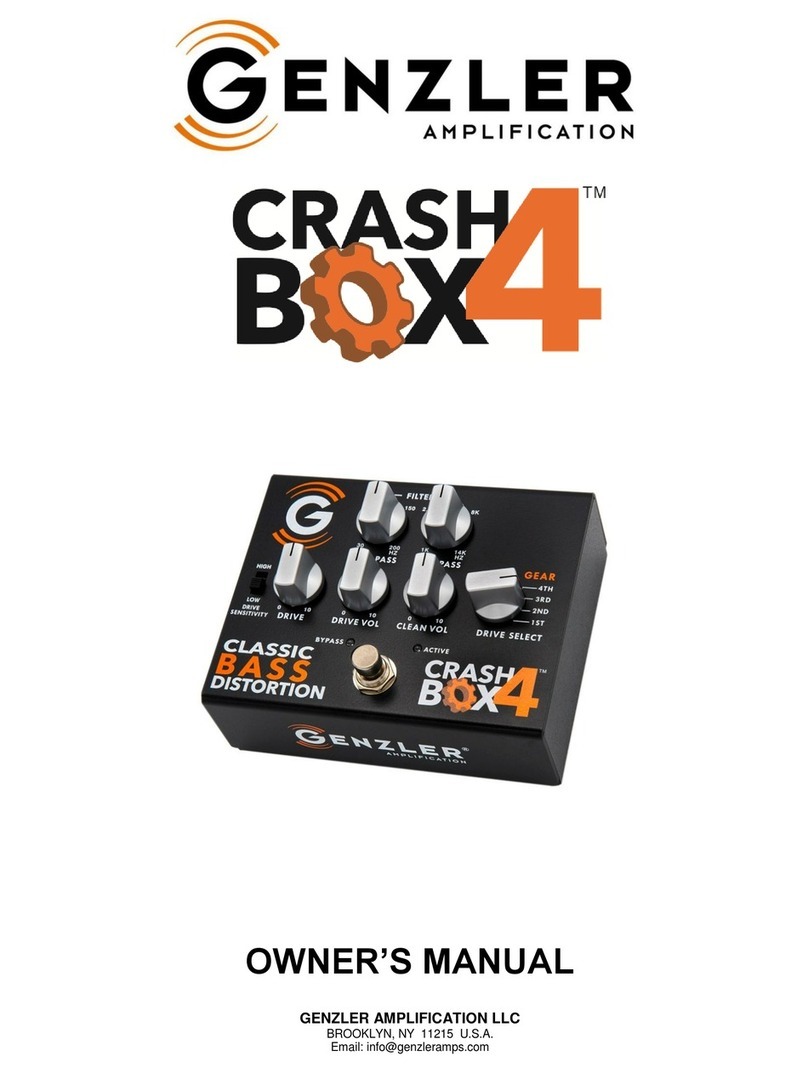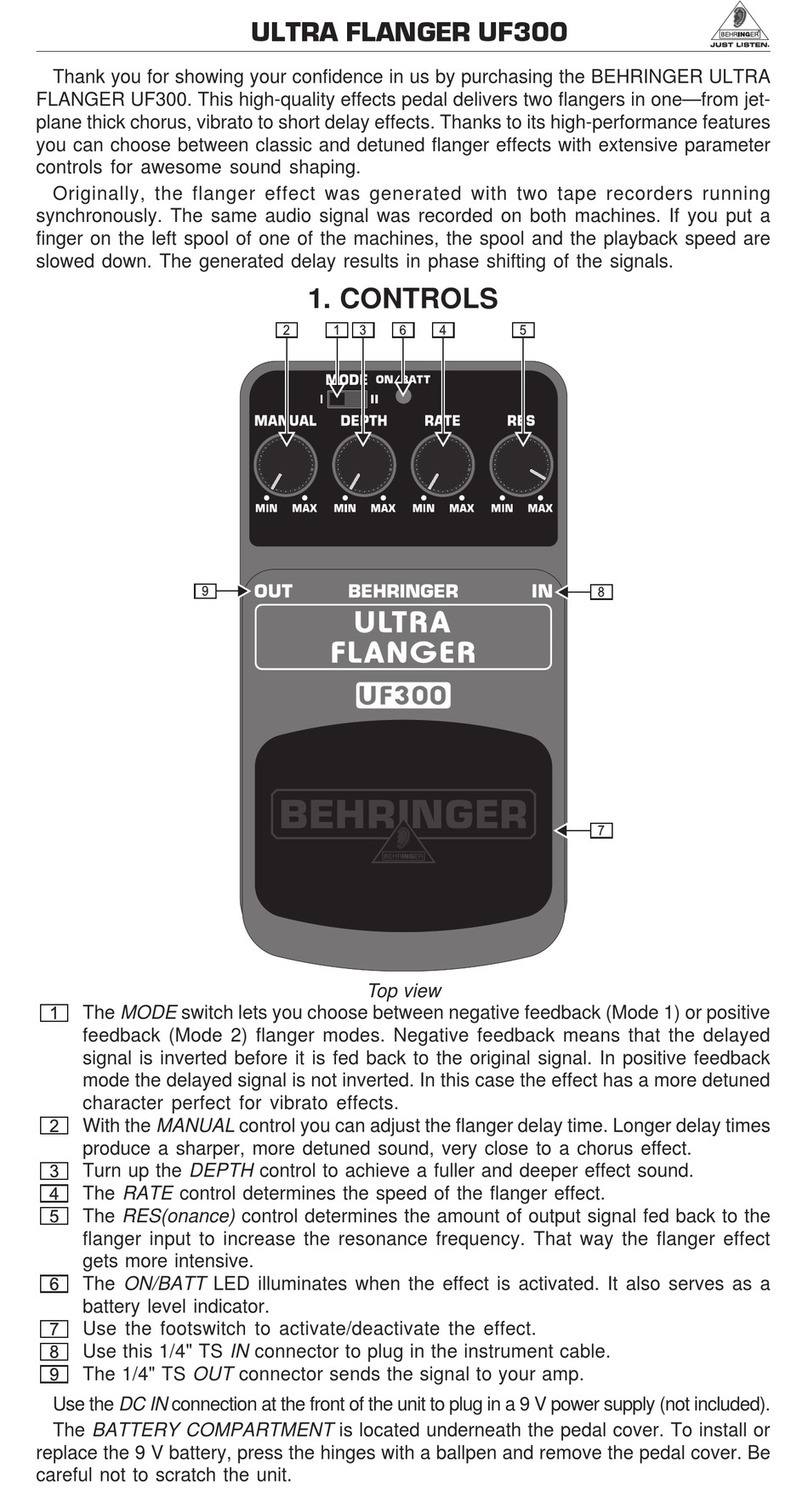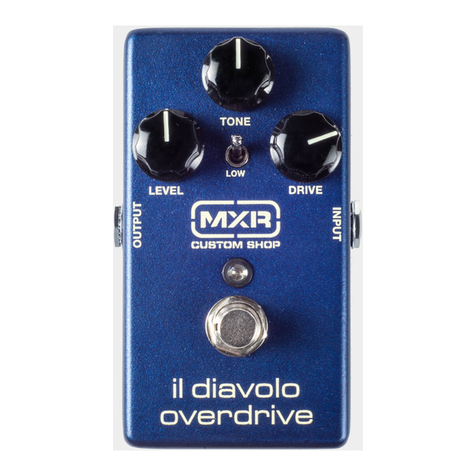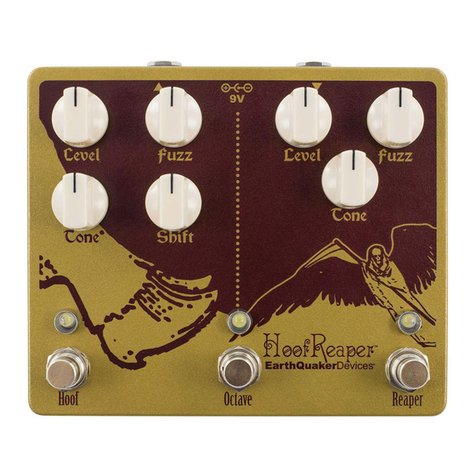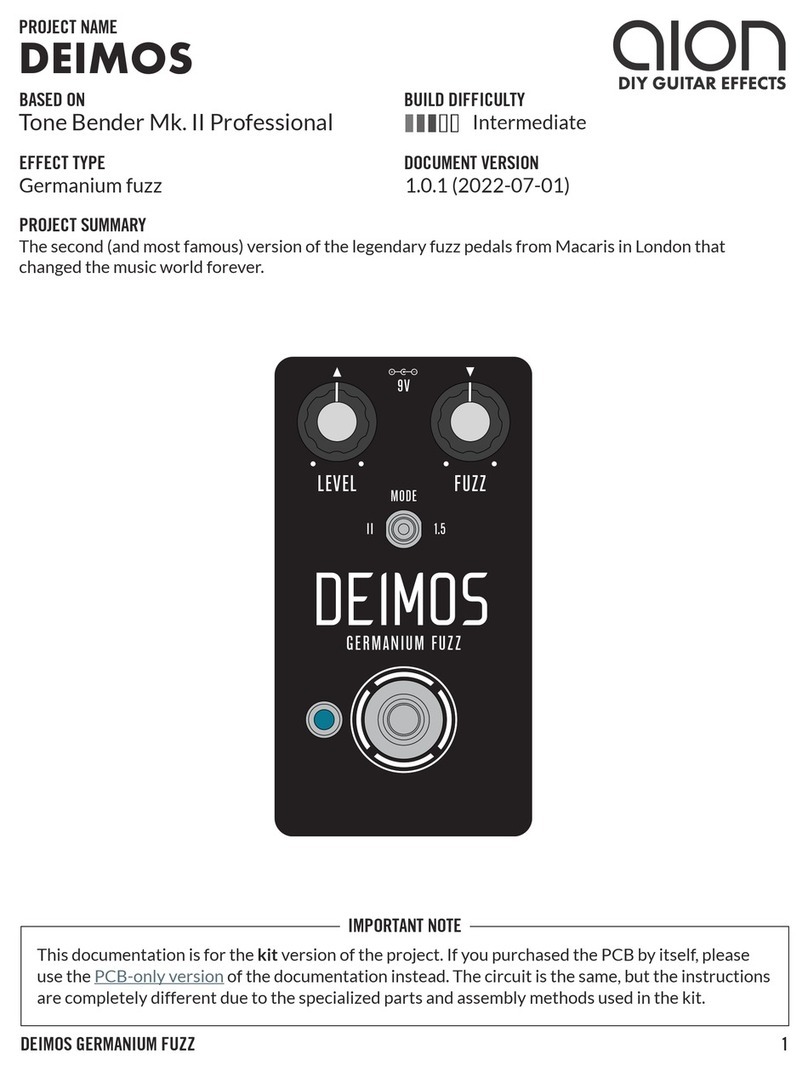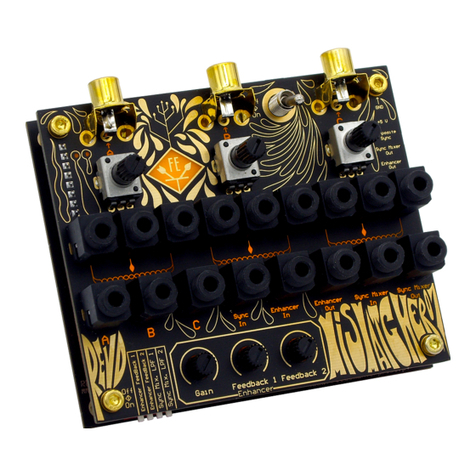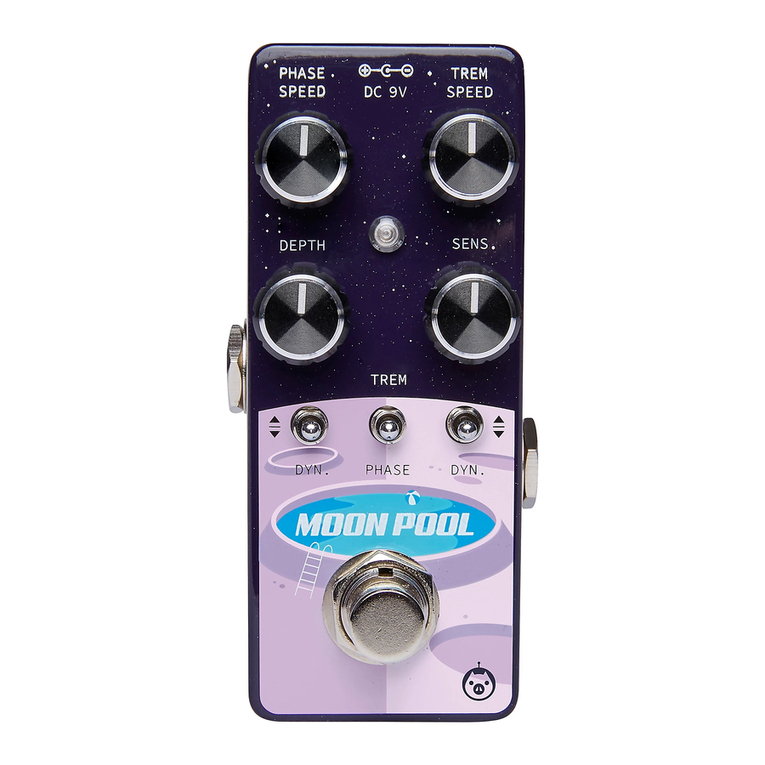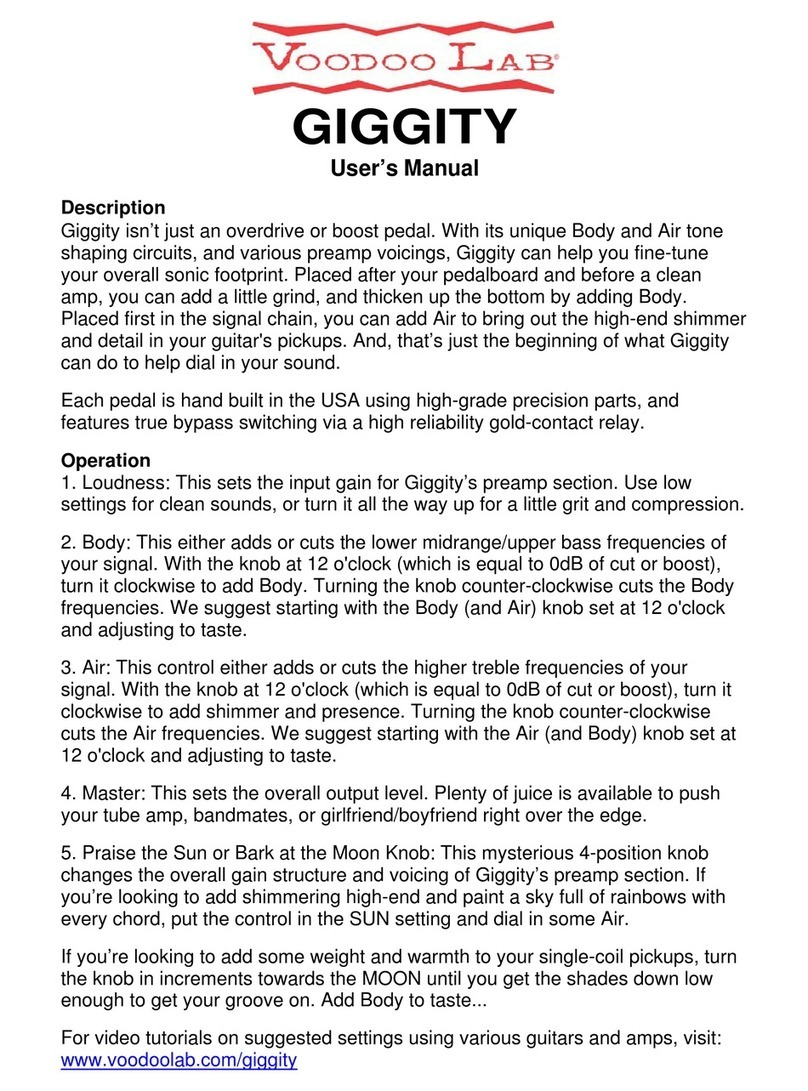GENZLER 4 ON THE FLOOR Classic Bass Overdrive User manual

OWNER’S MANUAL
GENZLER AMPLIFICATION LLC
BROOKLYN, NY 11215 U.S.A.
Email: info@genzleramps.com

PRODUCT DESCRIPTION –The 4 ON THE FLOOR™ “classic bass overdrive” is an ALL ANALOG bass overdrive pedal that gracefully emulates 4 different
overdrive types found in classic tube circuit topologies and then gives the player additional control over drive/gain, overdrive path (only)--high pass and low pass
filters and separately a clean blend. The result is the ability to tailor and fine tune the overdrive to fit with a wide spectrum of music and playing techniques, without
the loss of touch sensitivity, musicality, or the addition of induced excess noise.
DRIVE SENSITIVITY SWITCH - High sensitivity is the normal mode and is suitable for most basses, the low sensitivity position gives a greater range of control for
very hot bass preamps.
FOOTSWITCH - Pressing the footswitch alternates the pedal’s operation between BYPASS mode (RED LED) and ACTIVE mode (BLUE LED). No controls on the
pedal will function in bypass mode.
DRIVE –This control adjusts the drive to the analog overdrive engine, the higher the control the greater the overdrive. Most players find this control works best in the
11:00 to 4:00 o’clock positions.
DRIVE VOLUME –This control adjusts the level of the overdriven signal path present at the output of the pedal. Most players find this control works best in the 9:00
to 3:00 positions.
CLEAN VOLUME –This control adjusts the level of the clean signal path present at the output of the pedal. Most players find this control works best in the 9:00 to
2:00 positions. This control is also usable as a CLEAN BOOST only option, or with some blend of the overdrive controls too.
DRIVE SELECT (GEAR) –This 4 position switch works like the 4 speed gearshift on the transmission of your favorite classic car, selecting one of four available drive
algorithms.
1st GEAR: Reminiscent of a tube amp’s clean channel (including natural harmonics) with a bit of overdriven tone when driven hard. Many players will find that this
works well as an “always on” type of tone, just a hint of harmonic richness and dimensional texture, with no loss of dynamics.
2nd GEAR: Emulates a tube amp’s mildly overdriven tone, with a small amount of dynamically compliant clipping asymmetry. This is a natural feeling, touch sensitive
algorithm with very mild compression that responds with more texture and harmonics, the harder that you dig in.
3rd GEAR: A more aggressive up-shift from 2nd gear, this moderate, asymmetrical overdrive is less compliant, with greater compression for a tighter feel. The harder
you dig into this gear, the more harmonics will be produced and the more compression effect and texture you will feel.
4th GEAR: This is the most aggressive gear of all -- a heavier, symmetrical, low compliance overdrive that can enter distortion territory when driven hard. While there
are a lot of harmonics and compression present, this gear does not give up tone of feel. Because of the heavier compression, it’s normal for the output level to
appear lower than the other 3 gears, simply turn up the DRIVE VOLUME control a little to compensate for this.
HIGH PASS (LOW CUT) FILTER - This control is a variable frequency low cutoff of the signal into the overdrive engine. Increasing the frequency of this roll-off,
reduces the low frequency energy and helps retain the articulation and note definition with higher overdrive settings. This filter does not affect the clean path.
LOW PASS (HIGH CUT) FILTER - This control is a variable frequency high cutoff of the signal out of the overdrive engine. Reducing the frequency of this roll-off
reduces the high frequency energy in the overdriven signal and can mellow out the tone of the overdriven signal. This filter does not affect the clean path.

INPUT –Pedal input, nominally instrument level but can accept line level with the sensitivity switch set low. Input impedance is 1M.
POWER JACK - This pedal contains circuitry that auto-detects both the voltage and polarity of the attached power supply. The pedal will function properly from 9V to
18V, center positive or center negative polarity. With very high output basses, you may notice a little more input headroom with 12V or higher power supplies. Be
sure to use a low noise type power supply, general purpose power supplies can introduce noise into the signal path.
OUTPUT –Pedal output, nominally instrument level but can output up to line level with the DRIVE and CLEAN volumes turned up.
THEORY –Understanding the principles behind this pedal will allow you to unlock a wide range of overdrive tones, textures and dynamics. These four overdrive
types are based upon how classic analog circuits behave when overdriven, and when combined with the high pass/low pass filters and overdrive/clean blend, many
unique results can be expected.
The overdrive signal path first enters the HIGH PASS FILTER. Starting from the fully counter-clockwise (full range) position, rotating this control clockwise reduces
the amount of extreme low frequencies present which can help clarify and tighten the distortion products and reduce muddiness once the signal is overdriven within
the overdrive engine. Typically, the heavier the distortion, the more clockwise this control is set. The graphic above the control shows the filter’s action on the signal
path.
From here, the signal enters the overdrive engine which generates the distortion product harmonics, the type based on the DRIVER SELECT switch (as described
earlier in this manual). The different GEARS will appeal to different players, playing techniques and music styles and tastes. Some of the effect is tonal, some textural
and some, feel. The lower gears having more subtle textural and feel impact, the higher gears having more tonal and feel impact.
From here, the signal enters the LOW PASS FILTER. Starting with the control fully clockwise (full range) position, rotating this control counter-clockwise
progressively rolls-off the high frequencies of the distortion harmonics earlier, resulting in a smoother, mellower, less edgy distortion tone. Typically, the heavier the
distortion, the more counter-clockwise this control is set. The graphic above the control shows the filter’s action on the signal.
The DRIVE VOLUME and CLEAN VOLUME controls combine to form the “DRIVE-CLEAN” blend section, the levels of the two signal paths are completely
independent for a couple of important reasons:
1. The DRIVE VOLUME and CLEAN VOLUME can be set at whatever level is necessary to achieve the necessary results. Some players might choose to
use additional level from either or both control as a SOLO BOOST (with or without overdrive).
2. When using the CLEAN VOLUME alone, the pedal can function as a CLEAN BOOST ONLY (with the DRIVE VOLUME all the way down). This way, the
pedal can be used to overdrive the front end of an amp (if desired).
In general, the overdrive character and level will be set to meet your needs, then adding some clean signal can help improve the dynamics and low frequency
expansion and top end sparkle that may be missing from the overdrive only signal path. Switching between BYPASS and ACTIVE and adjusting the DRIVE and
CLEAN volumes can be used to balance the two modes, or add boost as needed.
SPECIFICATIONS:
Dimensions: 5” (127mm) W x 4.1” (104mm )D x 2.3” (59mm)H (w/ knobs and feet)
Weight: 1.1 lb (0.5kg)
Power Supply: 9VDC-18VDC (low noise type), either polarity (auto-detecting), 40mA max
Input Impedance: >1M ohm
Output Impedance: 1k ohm
Overdrive Engine Input HPF: 30Hz –200hz
Overdrive Engine Output LPF: 1kHz –14kHz
Input Sensitivity (nominal): -20dBu (high sensitivity), -10dBu (low sensitivity)
Maximum Input Level: 0dBu (9V supply), +5dBu (12V supply), +10dBu (18V supply), high sensitivity, DRIVE at 9:00
Maximum Input Level: +5dBu (9V supply), +12dBu (12V supply), +18dBu (18V supply), low sensitivity., DRIVE at 9:00
Maximum Output Level: +9dBu (9V supply) +14dBu (12V supply), +20dBu (18V supply)
[form: 4OTF-OM-WEB-REV2]
Table of contents
Other GENZLER Music Pedal manuals
Popular Music Pedal manuals by other brands
Lexicon
Lexicon MPX G2 Service bulletin
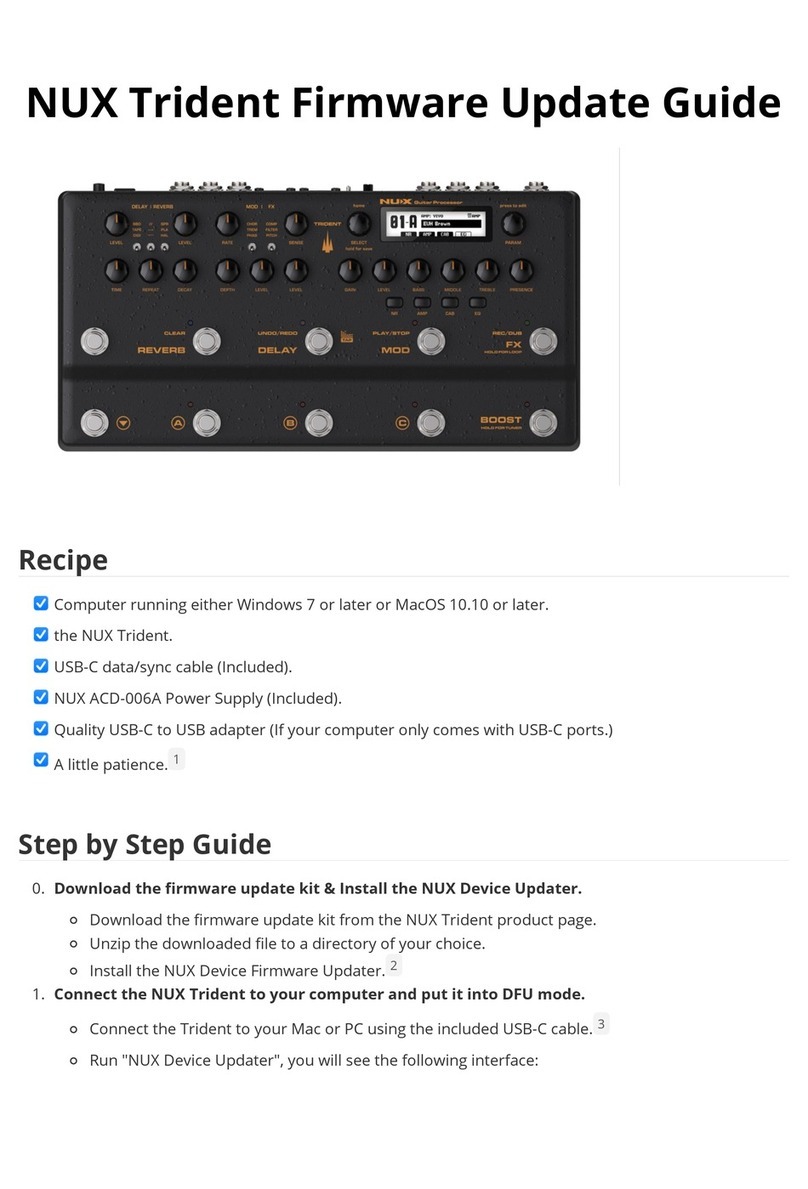
nux
nux Trident Firmware update guide
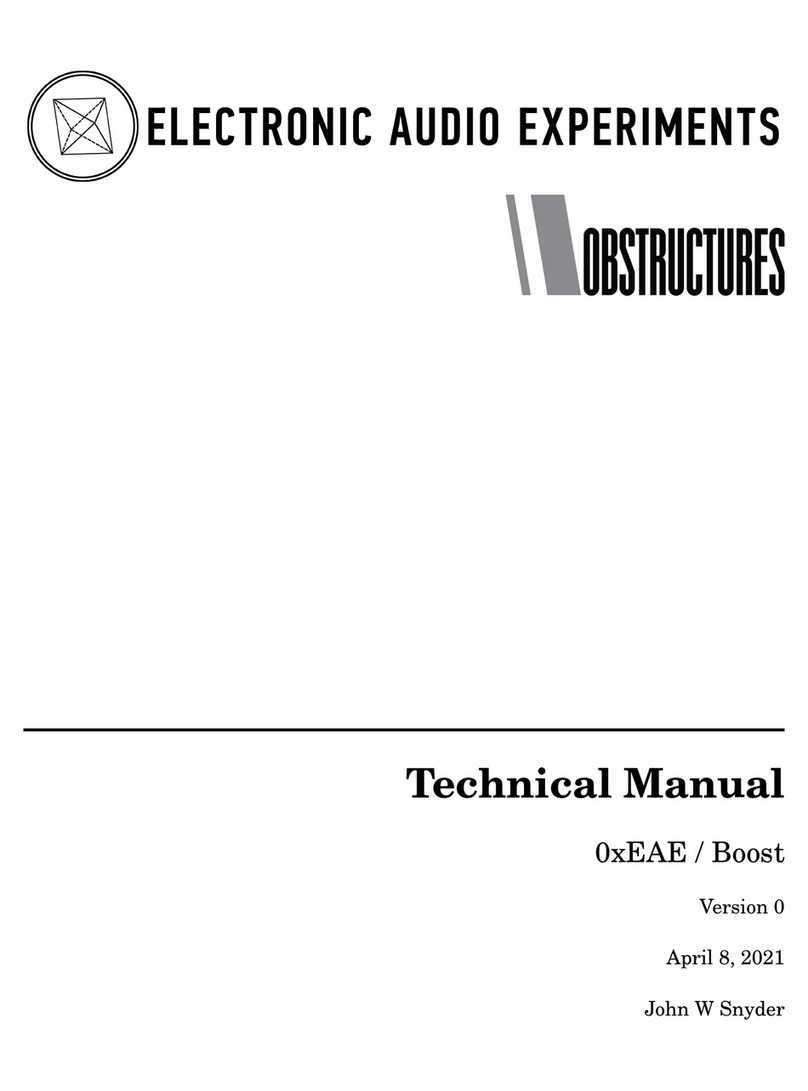
Electronic Audio Experiments
Electronic Audio Experiments OBSTRUCTURES 0xEAE Boost Technical manual

Behringer
Behringer BASS OVERDRIVE BOD100 user manual
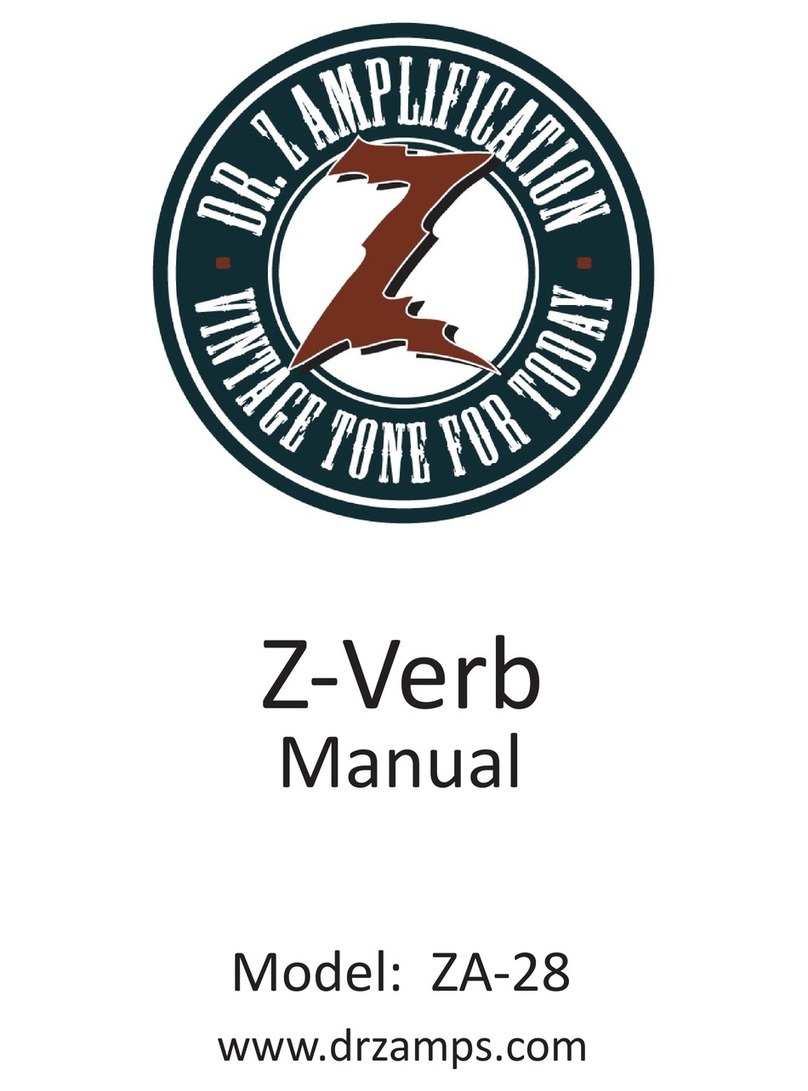
DR. Z Amplification
DR. Z Amplification z-verb ZA-28 user manual

Behringer
Behringer ULTRA CHORUS UC100 user guide
